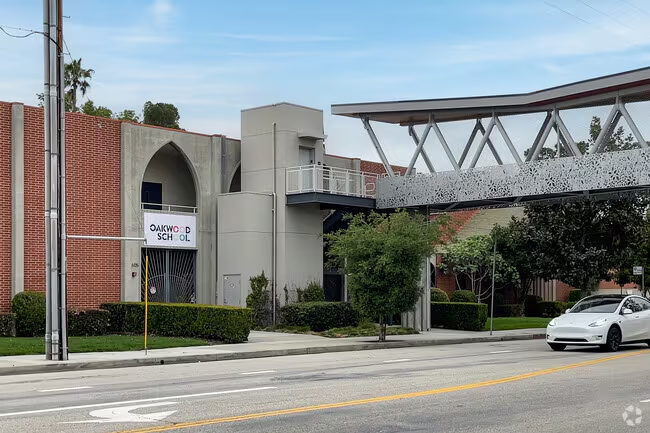Digital Objects
3D Graphics & Interactive Media
Teaching Overview
For five transformative years, I taught Digital Objects, an innovative 3D graphics elective course to middle and high school students at Oakwood School in North Hollywood. This dynamic course combined art, science, and technology to create an engaging creative classroom environment where students explored the cutting-edge intersection of digital fabrication, interactive media, and immersive technologies.
As part of KP's specialized program that recruited CalArts graduates as educators, I brought fresh perspectives from contemporary digital art practice directly into secondary education. The program represented Oakwood's commitment to providing students with access to professional-level creative technologies and theoretical frameworks typically reserved for higher education.
The course emphasized hands-on learning through interactive Unity worlds, augmented reality experiences, 3D printed sculptures, and animated media production. Students engaged with industry-standard tools and emerging technologies while developing critical thinking skills about digital culture, materiality, and the future of creative expression.

Course Highlights
Students developed fully interactive 3D environments using Unity, learning game design principles, physics simulation, and user experience design while creating immersive digital spaces.
Hands-on exploration of AR technologies, teaching students to layer digital content onto physical reality and understand the social implications of mixed reality interfaces.
Bridge between digital modeling and physical materialization, introducing students to additive manufacturing processes and the relationship between virtual design and tangible objects.
Field trips around campus using professional 3D scanning equipment, teaching students photogrammetry principles and spatial documentation techniques.
Introduction to cutting-edge mobile apps for photogrammetry, explaining the computational science behind 3D reconstruction from 2D images.
Technical foundation in how 3D graphics function, covering mesh topology, UV mapping, and the mathematical principles underlying digital geometry.
Pedagogical Philosophy
My teaching approach prioritized accessibility and creative freedom over traditional academic pressure. By utilizing open source and free web-enabled tools whenever possible and implementing a no-homework policy, I created an environment where learning was driven by genuine curiosity and creative passion rather than external requirements.
This philosophy proved remarkably successful—despite assigning no homework, students consistently arrived at class excited to share projects they had worked on independently, using tools and concepts learned in our sessions. This organic enthusiasm for continued learning outside the classroom demonstrated the power of intrinsic motivation in creative education.
The course combined rigorous technical instruction with conceptual exploration, helping students understand not just how to use digital tools, but why these technologies matter in contemporary culture. Students developed both practical skills and critical frameworks for understanding their role as creators in an increasingly digital world.
Impact & Mentorship
Over five years of teaching Digital Objects, I had the privilege of mentoring hundreds of promising young minds as they discovered their creative potential through technology. Many students went on to pursue digital arts, computer science, and design in higher education, carrying with them both technical skills and a critical understanding of technology's role in creative expression.
The course served as an important bridge between traditional art education and emerging digital practices, preparing students for a creative landscape increasingly defined by interactive media, virtual environments, and computational design. By introducing these concepts at the secondary level, students gained valuable early exposure to tools and concepts that would serve them throughout their academic and professional careers.
The success of the Digital Objects program at Oakwood demonstrated the importance of bringing contemporary digital art practices into secondary education, and the value of hiring practicing artists as educators who can bridge academic and professional creative communities.
Curriculum Innovation
The Digital Objects curriculum was continuously evolving to incorporate the latest developments in 3D graphics, AR/VR, and digital fabrication. As new mobile apps and web-based tools emerged, I integrated them into coursework, ensuring students had access to cutting-edge technologies as they became available.
This approach to curriculum development reflected the rapidly changing nature of digital media and prepared students to be adaptable learners who could continue exploring new tools throughout their careers. The emphasis on fundamental principles—such as understanding mesh topology and spatial relationships—provided students with conceptual foundations that remained relevant regardless of specific software or hardware changes.
By balancing technical instruction with creative exploration and critical thinking, the Digital Objects course prepared students not just to use digital tools, but to shape the future of creative technology through their own innovative practices.